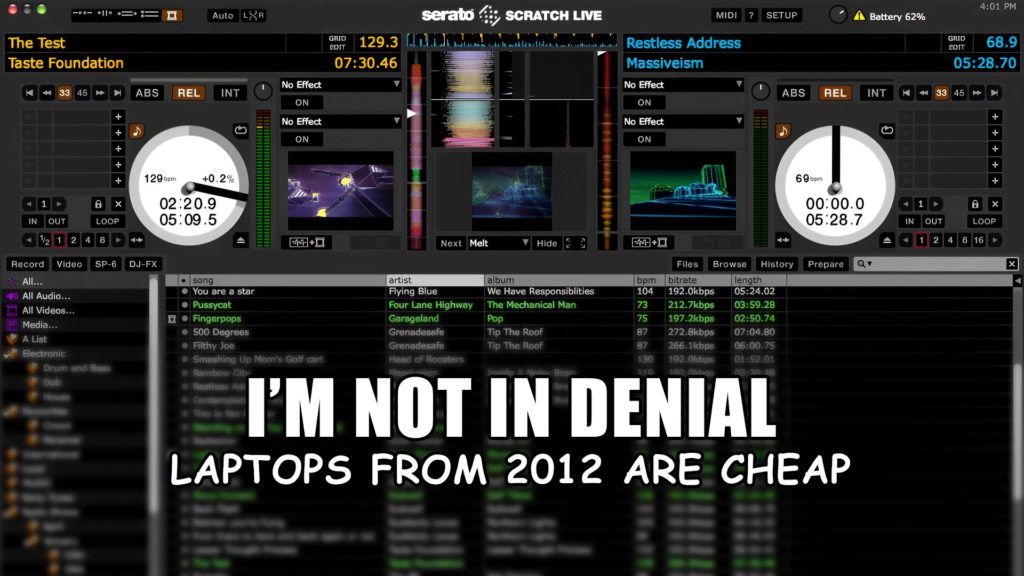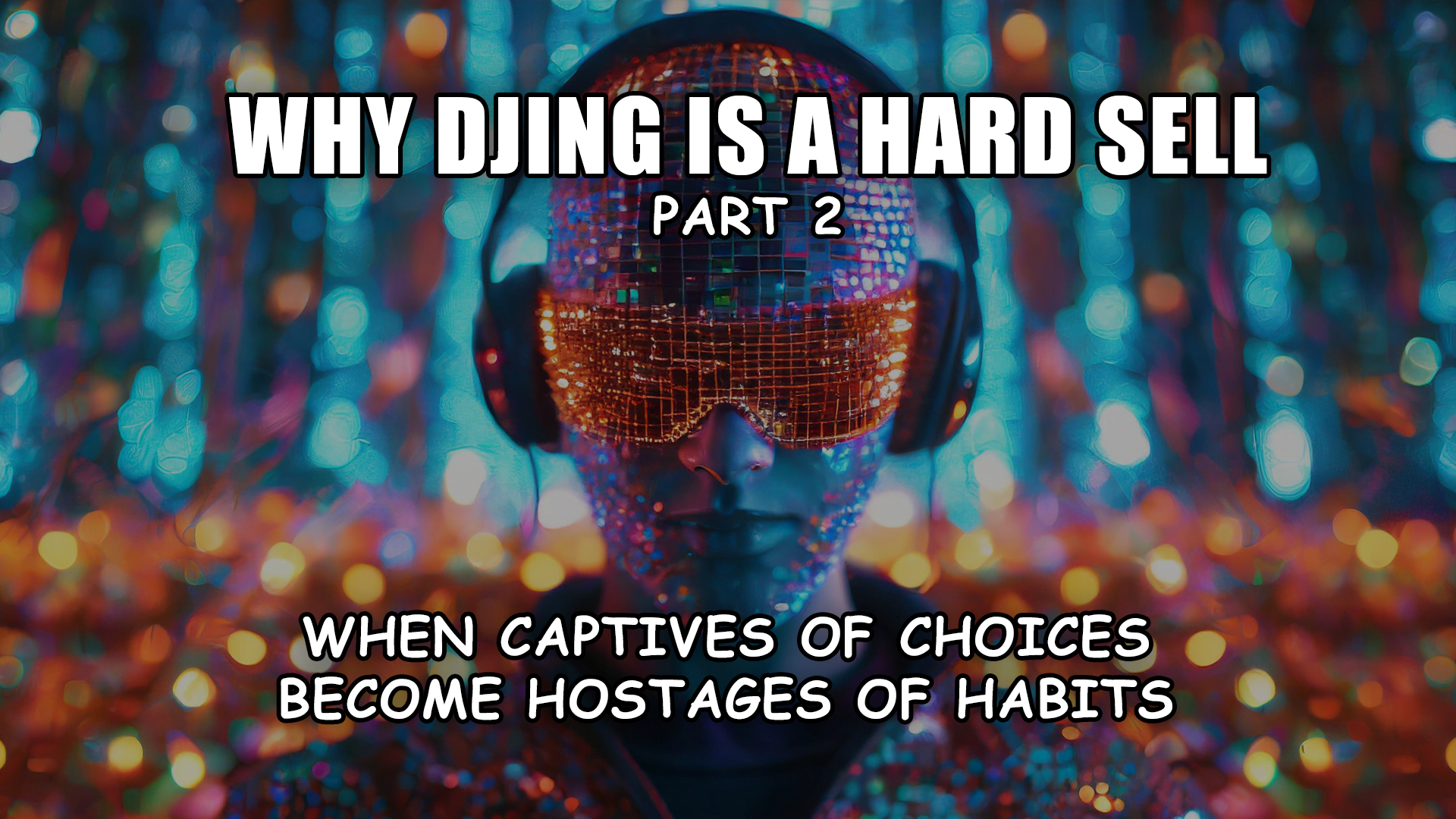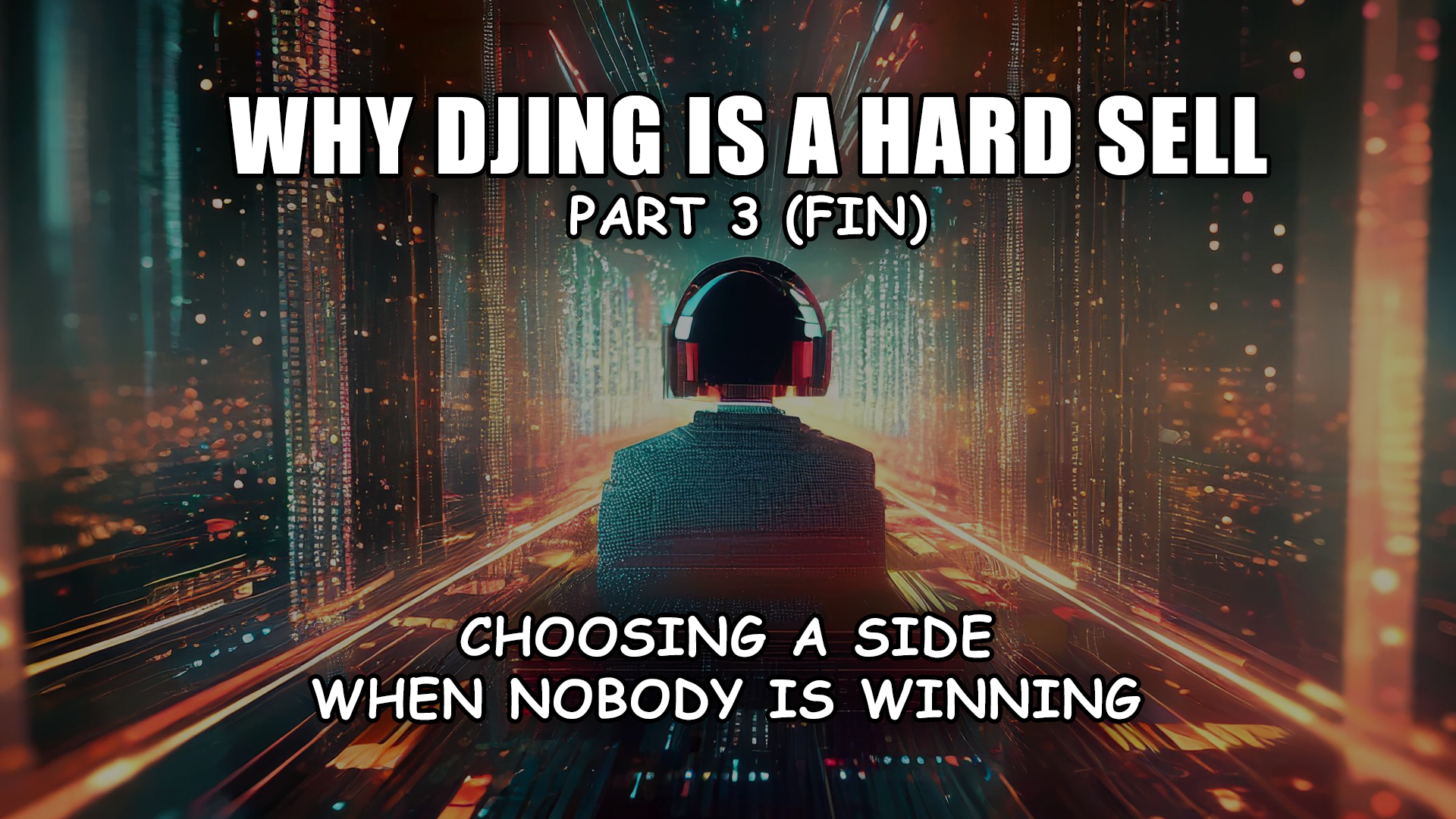If you’ve missed part 1, check it out here.
The tools we use to express ourselves in our art become a part of our identity to the point where people who have paid a company money for a thing then proudly exhibit that thing as part of their own promo imagery, their clothes, their gear bags. It goes even further – people will go to bat for the company they gave money to, and defend them in online debates even if that company has repeatedly fucked up, or directly fucked them over.
BRAND TRIBALISM
I honestly believe it’s a mutated form of Stockholm Syndrome. While that’s a harsh comparison, keep in mind that everything you use – your phone, your computer, your audio hardware, your DVS – is designed to lock you into a specific brand’s ecosystem. An ecosystem that is, by design, very easy to migrate into at first, but very hard to migrate away from. Ask any Apple user if they’ll ever consider a different phone or computer.
Once you’re in that ecosystem, your entire social media filter bubble soon inevitably adapts to it. Content delivery algorithms are trained on your behaviour. Maybe you look at tutorials (oh, if only more people looked at tutorials), maybe you watch DJ routines for inspiration. Either way, you see more of the brand you recently gave your money to, and soon it’s more present in your daily screen time than it has any right to be. So when you see a more popular artist you like using the same tools you do, you’re not necessarily going to buy more of the same thing – but you will feel included into that level of skill and perceived fame, even though you’re so far away from it it’s like a different universe.
Because of that gratifying sensation, you’re probably going to interact with the content in some way – a like, a comment, sometimes even a share. You’re proud of your tribe, you want your friends to either envy who you are by association, or join the tribe themselves. This is similar to the parasocial relationship people develop with influencers or their personas, except way worse. Because it’s not a person(a). You’re stanning the fucking consumer brand that makes a product you bought.

“Sent from my iPhone” is an early, particularly infuriating example, because it worked. Apple put that signature in for you by default (they probably mentioned it on page 857 of that EULA you didn’t read before clicking “Agree”), most people didn’t mind because… hey, look at this awesome phone I have. Isn’t it great? You know you want one. You may tell yourself you don’t, but you’ll never know what it’s like until you actually own one. Join us. The crazy ones. The misfits. The rebels. Square pegs, round holes, yadayada… you know, like some kind of Rogue 😉
Today you’re doing the same thing, but of your own accord, on your own social media channels. You’re doing free advertising work. You think you’re not an influencer because you don’t have hundreds of thousands of people smelling your farts? Wrong. You and your filter bubble, together, inadvertently boost brand imagery and thus create a much more potent cloud composed of thousands of small farts. One that is omnipresent, impossible to escape, and soon indistinguishable from regular air. I know that’s a fairly disgusting analogy (I could’ve said “comparison” but I’m already deep down the rabbit ho- fuck!). The more you realize how how accurate it is, the uglier it gets.
It’s something I think it’s really healthy to be aware of, in fact it should be part of early childhood curricula. Children, and especially young adults, need to be taught the mechanisms designed to exploit them. Because those people and those brands are not your friends, and they will always choose profit over you. In brutal terms, you, singular – the individual – don’t matter. You, plural – as in the userbase as a group – does. But that userbase has incredible inertia. You can leave, but no one will follow. They won’t care. In fact you may outright be excluded because you no longer use what your friends use. Words like “traitor” have been used towards people who… switched to a different set of media players. No, really.

The solution to this pointless bickering (hey Dan, I made a Star Wars reference… inside a trilogy) is to realize one very simple fact. Our setups are not better than one another, they’re different from one another. They do different things in different ways, but at the core they do what we want. It doesn’t matter who sells them, it matters how we use them. I’m a DJ. And you’re a DJ. That’s the tribe! Or at least it should be. Unless you’re entering DMC, there’s no need for competition (and even then it’s all in good fun, which some people sadly never get). Especially not on behalf of the brands that sell us the things we use. Nobody on the dancefloor gives a shit. Just play us something good, something with a beat, something we can dance to.
I WON’T LEAVE ANYTIME I CAN
Besides belongingness (TIL this is a word, so I’m linking to it) and peer pressure, what can keep you locked into your chosen setup? In part 1, we’ve established that most DJs don’t use a fraction of the features they have instant access to, and it doesn’t really matter because the venn diagram of features between the majority of DJ hardware and software is basically a circle. But assuming the whole tribalism thing doesn’t apply to you and you’re constantly excited about new things to try… when an interesting new gimmick comes along, why don’t you just jump ship immediately?
I’ll use myself as an example because for all the things that are perhaps a bit odd about my approach to everything tech, at the core I’m a slave to the same principles of the human brain. Principles like habit formation.
I have my entire DJ library structured in folders and maintain multiple redundant backups. It’s tedious, manual labour I haven’t been able to automate using AI tools – only regular expressions cleaning up the tags, sometimes deriving them from file names, sometimes the other way around, then running all of it through MixedInKey, merging folders across backup drives etc.
The benefit of this extra work? I can take this structure and drag it into any hardware player or DVS, and will basically be ready to go, with minimum effort. But the point is: I don’t. I’m still, despite its many failings and repeated disappointments, on Traktor.

Of course if I put my mind to it and do an XML deep dive for a couple of days, I can basically replicate the features I need in Serato (there’s a LOT more you can do than the GUI allows you to) – but my Xone:96 won’t work with that DVS, and I really like this mixer. I don’t want to use, say, a DJM-V10 instead. So one way or another, I’ve trapped myself in a certain setup because of my preferences and choices, which over time became habits.
One thing I have long since grown out of, however, is defending any of it. I’m fully aware that most of this extra effort is basically copium. A carefully-maintained illusion of full flexibility I’m way too lazy/hesitant to actually capitalize on until I have no other option – dressed in a heap of live-rendered visual extra that I could, but won’t, build around another DVS. Because Traktor is part of my DJ identity, and despite my love/hate relationship with it, I really like it at the core of my rig. If and when the time comes, I will be genuinely sad to swap it out for something else.
Habits are incredibly hard to change – especially when they’re tied to something that is part of your world view or identity. It takes about 8 weeks for daily repeated behaviours to become established habits, and at first glance that doesn’t seem like a lot of time. However, when you’re trying to drop a habit you’re particularly comfortable with, that time span feels more like 8 months than weeks.
Just look at how long people kept jumping through all kinds of hoops to stay on Serato Scratch Live after Serato DJ was released.

We should be happy where we are – and I hope you, dear reader, are happy wherever you are with your setup. But the industry doesn’t want you to be happy. Because if you’re happy, you won’t want that new thing you don’t really need.
Concluded in part 3!



